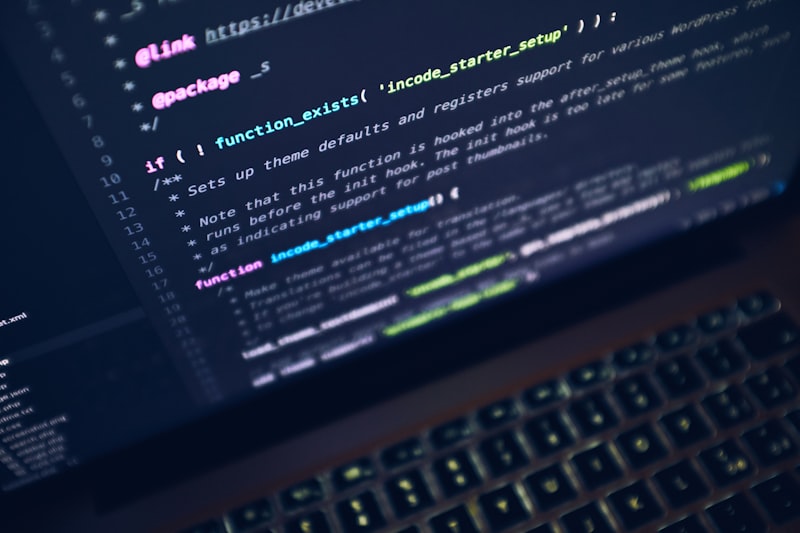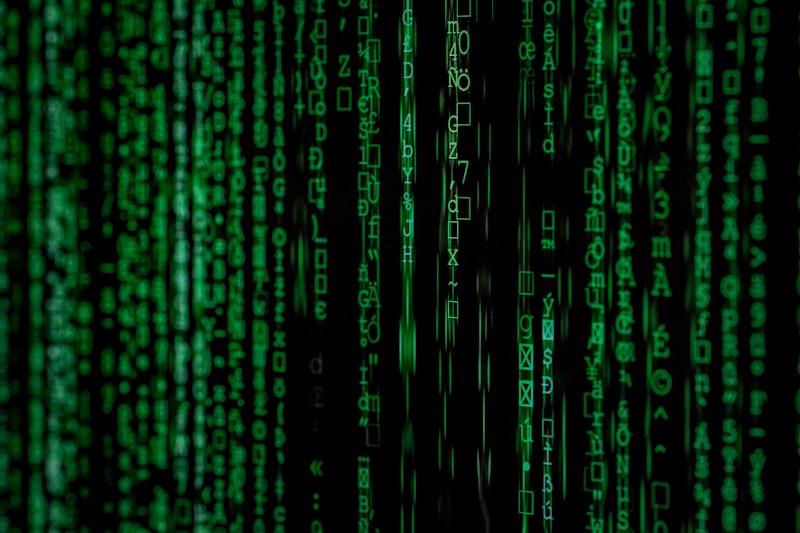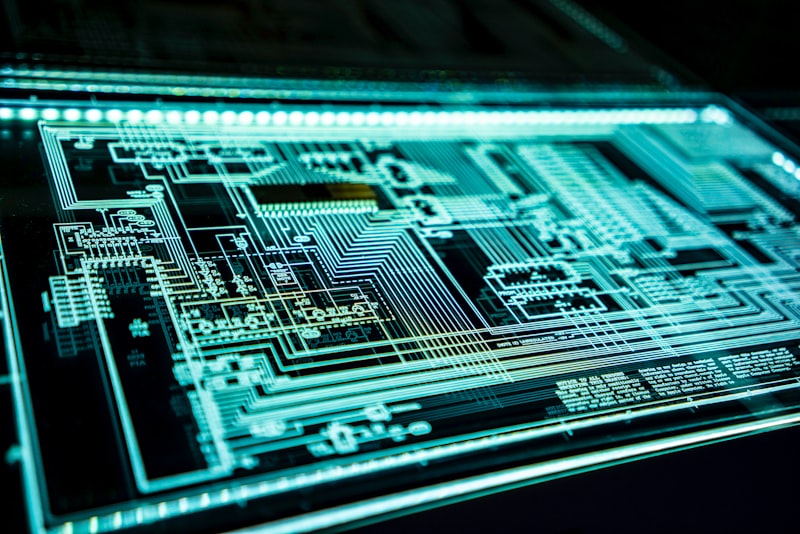Artificial Intelligence Supported Health Diagnosis Systems



Have you ever wondered how artificial intelligence (AI) is revolutionizing the field of health diagnosis? With advancements in technology, AI is making significant strides in assisting healthcare professionals in accurately diagnosing medical conditions. In this article, we’ll delve into the details of how AI-supported health diagnosis systems are transforming the way diseases are detected and treated.
One of the key benefits of AI in health diagnosis is its ability to analyze vast amounts of medical data quickly and efficiently. By leveraging machine learning algorithms, these systems can process complex medical records, lab results, and imaging scans to identify patterns and trends that might be missed by human doctors. This helps in early detection of diseases and enables timely interventions, ultimately saving lives.
AI-supported diagnostic systems also excel in providing personalized medicine. Each individual’s health profile is unique, and AI algorithms can take into account various factors such as genetics, lifestyle choices, and medical history to offer tailored treatment plans. This approach ensures that patients receive the most effective therapies, increasing the chances of successful outcomes.
Moreover, AI-enabled diagnosis systems demonstrate remarkable accuracy. When trained on vast datasets, AI algorithms can learn from past cases and make accurate predictions about disease progression or treatment responses. This assists healthcare providers in making informed decisions and reduces the risk of misdiagnosis or unnecessary procedures.
Another valuable aspect of AI in health diagnosis is its potential to bridge the gap in access to healthcare in remote or underserved areas. Through telemedicine, AI-powered diagnostic tools can provide preliminary assessments and triage patients, allowing them to receive timely care without the need for physical consultations. This democratization of healthcare has the power to improve health outcomes for millions of people worldwide.
The advent of AI-supported health diagnosis systems has brought a paradigm shift in the medical field. These systems possess the ability to analyze vast amounts of data, provide personalized treatment plans, ensure accuracy in diagnoses, and increase accessibility to healthcare services. As AI continues to evolve, we can expect even more breakthroughs in health diagnosis, leading to improved patient care and outcomes.
Revolutionizing Healthcare: How Artificial Intelligence is Transforming Health Diagnosis Systems
Imagine a world where technology plays an instrumental role in transforming the healthcare industry. Thanks to advancements in artificial intelligence (AI), this vision is becoming a reality. AI is revolutionizing health diagnosis systems, bringing about tremendous benefits and transforming the way medical conditions are detected and diagnosed.
One of the key advantages of AI-powered health diagnosis systems is their ability to analyze vast amounts of data with unparalleled speed and accuracy. Traditional diagnostic approaches often rely on human expertise alone, which can be prone to errors and delays. However, AI algorithms can swiftly process massive datasets, including patient records, medical research papers, and real-time health monitoring data. By analyzing this wealth of information, AI systems can identify patterns, detect anomalies, and provide valuable insights to healthcare professionals.

The introduction of AI also brings unprecedented efficiency to health diagnosis systems. With AI, doctors and specialists can make more informed decisions based on data-driven evidence. AI algorithms can assist in diagnosing diseases by recognizing symptoms, interpreting medical images, and comparing them to extensive databases of previous cases. This not only saves time but also helps reduce misdiagnoses and improves overall patient outcomes.
Furthermore, AI enhances accessibility to healthcare services, especially in remote or underserved areas. Through telemedicine platforms and AI-powered chatbots, patients can receive preliminary assessments and medical advice without visiting a physical clinic. AI-based virtual assistants can ask relevant questions, evaluate symptoms, and suggest potential diagnoses, offering a convenient way for individuals to seek initial guidance before consulting with a healthcare professional.
By leveraging AI’s capabilities, health diagnosis systems are becoming more precise and personalized. AI algorithms can consider individual variations, genetic factors, and lifestyle choices when determining diagnoses. This personalized approach enables tailored treatment plans that cater to each patient’s unique needs, leading to better therapeutic outcomes and higher patient satisfaction.
The integration of artificial intelligence into health diagnosis systems is revolutionizing healthcare. AI’s ability to analyze vast amounts of data, improve accuracy, enhance efficiency, increase accessibility, and deliver personalized care is transforming the way medical conditions are diagnosed and treated. As we continue to embrace this technology, we can look forward to a future where AI plays a vital role in improving healthcare outcomes for individuals around the world.
AI-Powered Diagnostics: The Future of Precision Medicine and Personalized Healthcare
Imagine a world where healthcare is tailored to your unique needs, where doctors can predict and prevent diseases before they even occur. Thanks to advancements in artificial intelligence (AI), this vision is becoming a reality. AI-powered diagnostics is revolutionizing the field of medicine, paving the way for precision medicine and personalized healthcare.
But what exactly is AI-powered diagnostics? It involves utilizing machine learning algorithms and data analysis to interpret vast amounts of medical information quickly and accurately. By analyzing patient data, including genetic profiles, medical history, and lifestyle factors, AI algorithms can identify patterns and make predictions that help physicians diagnose and treat diseases more effectively.
One of the most significant advantages of AI-powered diagnostics is its ability to detect diseases at an early stage when treatment options are more effective. For example, AI algorithms can analyze imaging scans such as MRIs and CT scans to identify subtle abnormalities that human eyes might miss. This early detection can potentially save lives by enabling timely interventions and improving patient outcomes.
Moreover, AI-powered diagnostics can enhance the accuracy of diagnoses. Through continuous learning and exposure to vast amounts of medical data, AI algorithms can spot patterns and anomalies that could be indicative of specific diseases. This assists doctors in making more accurate and confident diagnoses, reducing the likelihood of misdiagnoses and unnecessary treatments.
Another remarkable aspect of AI-powered diagnostics is its potential to personalize healthcare. Each individual is unique, and their response to treatments may vary. AI algorithms can analyze a person’s genetic makeup, lifestyle choices, and other relevant factors to develop personalized treatment plans. This ensures that patients receive the most effective therapies with minimal side effects, leading to improved overall health outcomes.
While AI-powered diagnostics holds immense promise, it is not without challenges. Privacy concerns, data security, and ethical considerations are among the issues that need to be addressed. Additionally, integrating AI technologies into existing healthcare systems requires careful planning and collaboration between healthcare professionals, researchers, and technology experts.
AI-powered diagnostics is revolutionizing the healthcare landscape by enabling precision medicine and personalized healthcare. By harnessing the power of AI algorithms, doctors can detect diseases earlier, make more accurate diagnoses, and personalize treatments for better patient outcomes. Although challenges exist, the potential benefits are vast, providing hope for a future where healthcare is truly tailored to each individual’s needs. The era of AI-powered diagnostics is dawning, and it holds the promise of transforming healthcare as we know it.
From Data to Diagnosis: How AI Algorithms are Helping Doctors Make Accurate Health Assessments
Imagine a world where doctors have access to a wealth of data that can help them make accurate health assessments and improve patient care. Thanks to advancements in artificial intelligence (AI) algorithms, this vision is becoming a reality. In this article, we will explore how AI algorithms are revolutionizing the field of medicine and empowering doctors to make more precise diagnoses.
Gone are the days when doctors relied solely on their clinical experience and intuition to diagnose patients. With the aid of AI algorithms, they now have access to vast amounts of medical data. These algorithms can analyze patient records, lab results, imaging scans, and even genetic information in a matter of seconds. By sifting through this trove of data, AI algorithms can identify patterns and correlations that may not be immediately apparent to human doctors.

One key advantage of AI algorithms is their ability to process information at an incredible speed. They can quickly compare a patient’s symptoms to a large database of medical cases, helping doctors narrow down potential diagnoses. This not only saves valuable time but also reduces the likelihood of human errors that can occur due to fatigue or cognitive biases.
Another way AI algorithms assist doctors in making accurate health assessments is through their continuous learning capabilities. These algorithms can be trained on vast amounts of medical literature and research, allowing them to stay up to date with the latest advancements in the field. As new information becomes available, AI algorithms can incorporate it into their decision-making process, ensuring doctors have access to the most current knowledge.
Moreover, AI algorithms can act as invaluable decision support tools. They can provide doctors with additional insights, alternative treatment options, and even predict potential outcomes. This collaborative approach between humans and machines strengthens the diagnostic process and enhances overall patient care.
AI algorithms are transforming the way doctors make health assessments by harnessing the power of data. By analyzing vast amounts of medical information, these algorithms can assist doctors in making more accurate diagnoses and improving patient outcomes. As AI continues to advance, we can expect even greater collaboration between humans and machines, ultimately leading to a future where healthcare is personalized, precise, and efficient.
Breaking Barriers: How Artificial Intelligence is Bridging the Gap in Access to Healthcare Diagnoses
Imagine a world where people from all walks of life, regardless of their location or socioeconomic status, have equal access to accurate and timely healthcare diagnoses. With the advent of artificial intelligence (AI), this vision is becoming a reality. AI is breaking barriers and revolutionizing the healthcare industry by bridging the gap in access to healthcare diagnoses.
One of the key challenges in healthcare is the shortage of specialized medical professionals, particularly in remote or underserved areas. This scarcity often leads to delayed diagnoses and inadequate treatment plans for patients. However, AI is changing the game by leveraging its immense computational power to analyze vast amounts of medical data quickly and accurately. By doing so, it helps healthcare providers make informed decisions even in the absence of on-site experts.
Moreover, AI-powered diagnostic tools are empowering individuals to take charge of their health. Gone are the days when seeking a diagnosis required multiple visits to different specialists. Now, with the help of AI-driven applications, people can receive preliminary assessments and recommendations right at their fingertips. By inputting their symptoms into user-friendly interfaces, they gain valuable insights about potential conditions and possible next steps, saving time and reducing anxiety.
But how does AI ensure accuracy? The answer lies in machine learning, a branch of AI that enables systems to learn from data and improve performance over time. These algorithms are trained on vast datasets, including medical records, research studies, and expert knowledge. As a result, AI models become increasingly proficient at recognizing patterns and predicting diagnoses. This continuous learning process enhances the accuracy and reliability of AI-driven diagnoses, making them comparable to those made by human experts.
Beyond individual diagnoses, AI is also transforming population health management. By analyzing aggregated data from diverse sources, such as electronic health records and wearable devices, AI algorithms can identify disease trends and risk factors on a large scale. This information enables healthcare organizations to proactively allocate resources, implement preventive measures, and tailor interventions to specific communities. Ultimately, AI-driven population health initiatives have the potential to save countless lives and improve overall public health outcomes.

Artificial intelligence is breaking barriers and revolutionizing access to healthcare diagnoses. By harnessing its computational power, AI is empowering both healthcare providers and individuals in obtaining accurate and timely assessments. Through machine learning, AI systems continuously improve their accuracy and reliability, rivaling human expertise. Furthermore, AI’s role in population health management enables proactive interventions and tailored strategies for healthier communities. As we embrace the potential of AI, we move closer to a future where everyone can benefit from cutting-edge diagnostic technologies, regardless of their circumstances.




